It’s been years since we built our living room coffee table and when it came time to accessorizing the outdoor living room, I knew I would need one. I loved the Ipe wood on the bar so much that I asked my contractor to buy me some more so we could make a table out of it. You probably noticed it when I did the outdoor living room reveal, but today I wanted to show you how we made it.

Here’s what you’ll need:
- Your choice of wood, we used Ipe (a tropical wood)
- Table saw or a chop saw
- Drill
- Wood screws
- Stain or sealer (or both)
Step 1:
The first step is figuring out how big you want your table to be. Use a measuring tape to layout the size, in the space you are going to use it in. You will need to determine how long, how wide and how tall you want it. Once you’ve determined those measurements, you can start your project!
Step 2:
Measure and cut the table top pieces.

We used a chop saw to cut our boards because it’s fast and easy. A table saw works well too. Set them aside.

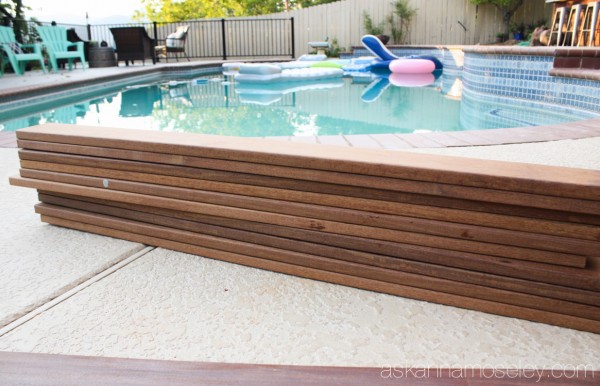
Step 3:
Next you’ll determine how tall the legs need to be. Subtract the height of the table top boards from the total height to determine how tall the legs need to be, otherwise your table will end up a little taller than you were planning.
Once you’ve determined how tall they need to be, measure and cut.
Step 4:
After you’ve cut them all pair them up, you should have 8 legs, which equals 4 pairs. They will look like this when you match them up.
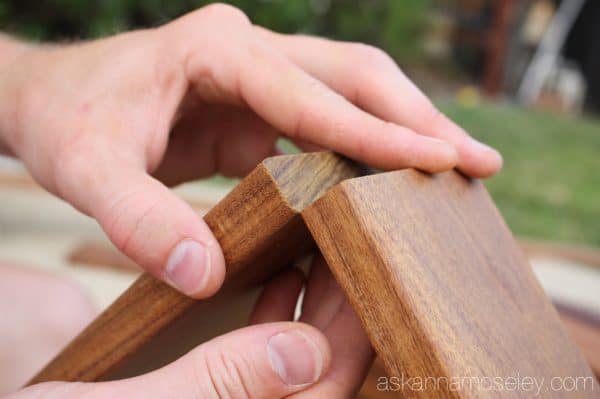
Of course that won’t work because you’ll need a flat surface to lay your next board onto. Determine how far apart you want your legs, to figure out the angle to cut them at. I didn’t want my legs to be too far apart so our angle was pretty steep.


Figuring out the angle is honestly the hardest part of the project. Neither one of us remember geometry so we did a couple rounds of trial and error to get the perfect angle. I recommend using a scrap board for all the trail and error, until you have it figured out. 🙂
Step 5:
Next you’re going to cut the boards that will be the tops of the 2 sawhorses. The length of these boards will be determined by how wide your table top is going to be. It can be the exact width of the table, or a little smaller. We cut ours to be a little smaller so the table top boards hang over almost 2″. This picture is a few steps ahead but it will show you what I’m talking about.
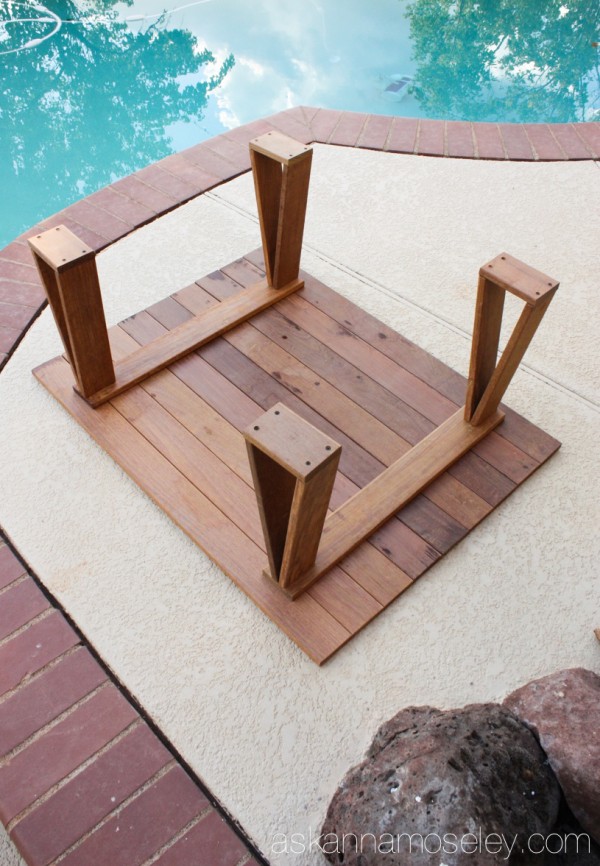
Step 6:
Once you have the tops of your sawhorses cut, it’s time to attach the legs. The Ipe wood we used is a really hard wood so we had to pre-drill all our holes. These next 3 pictures explain how to do that. If you are using a softer wood, and don’t need to pre-drill holes, go down 3 pictures and then start reading.
Lay the top board on the ground and place the leg boards, upright, on top of it. Trace around them so you can remove them to mark where you will drill the holes.


Then using a small drill bit, pre-drill the holes. I recommend laying the board you are drilling the holes in, on top of a scrap pieces of wood, so you don’t drill through anything else on accident.

Once the holes are drilled, place the legs underneath and screw them in. We took turns, one of us holding everything in place and one of us screwing it together. This is definitely a 2-person job.
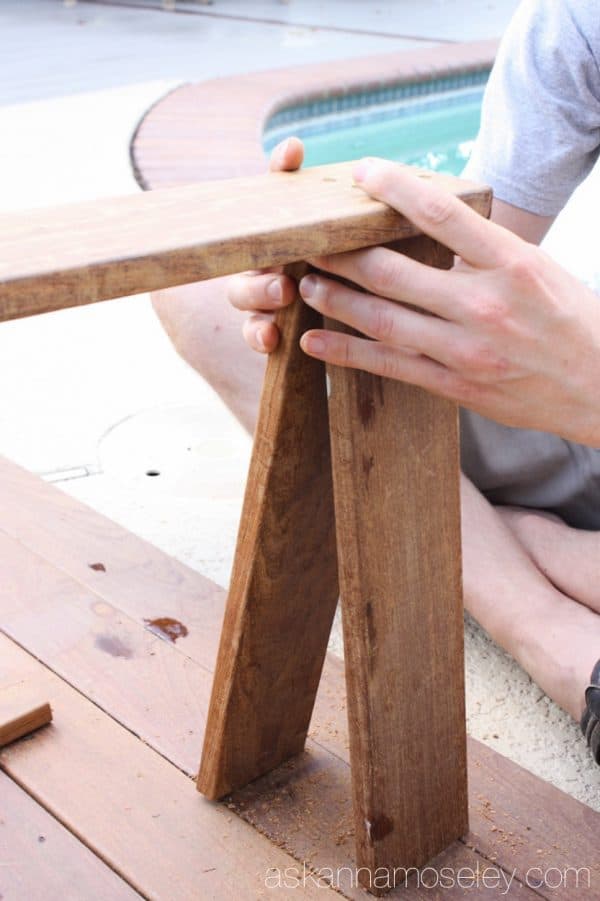
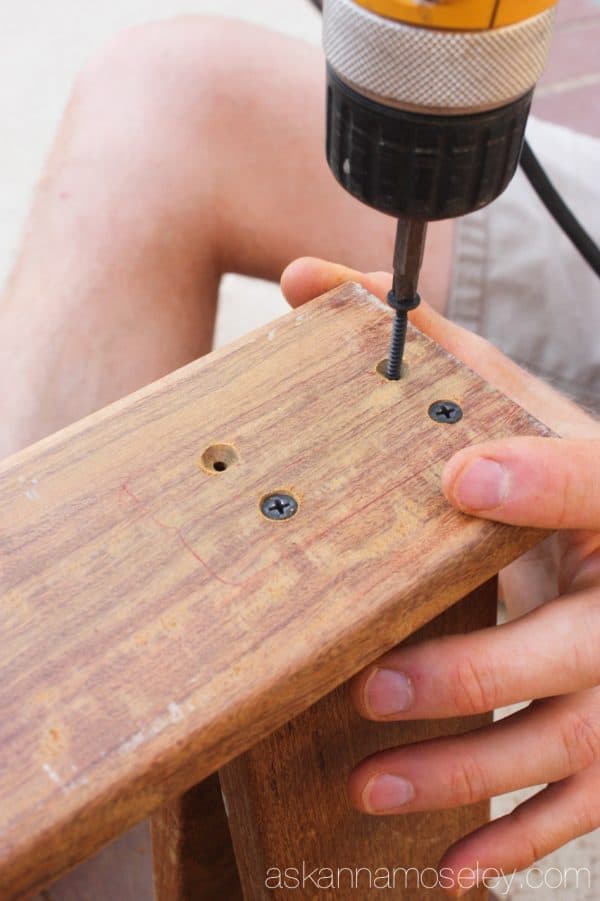
Repeat these steps will all 4 sets of legs until both sawhorses are built.

Step 7:
To secure the legs in place the next step is to measure, and cut, a “foot board”. Turn the sawhorse over and measure how far apart each of the legs are. You can also set the sawhorse directly on top of another board and use a pen to mark the length needed.
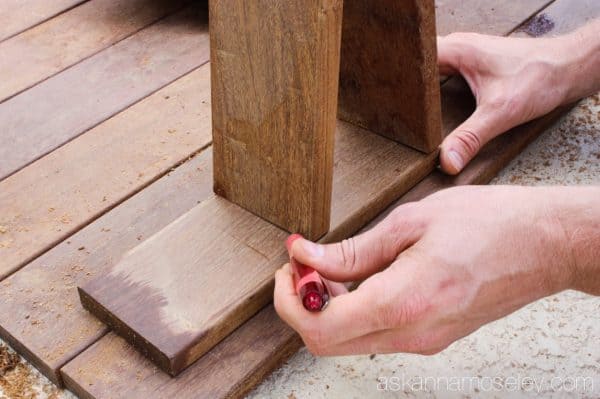
Cut a board that is the exact width and screw it in place. This will keep the legs strong and prevent them from giving away under too much pressure.
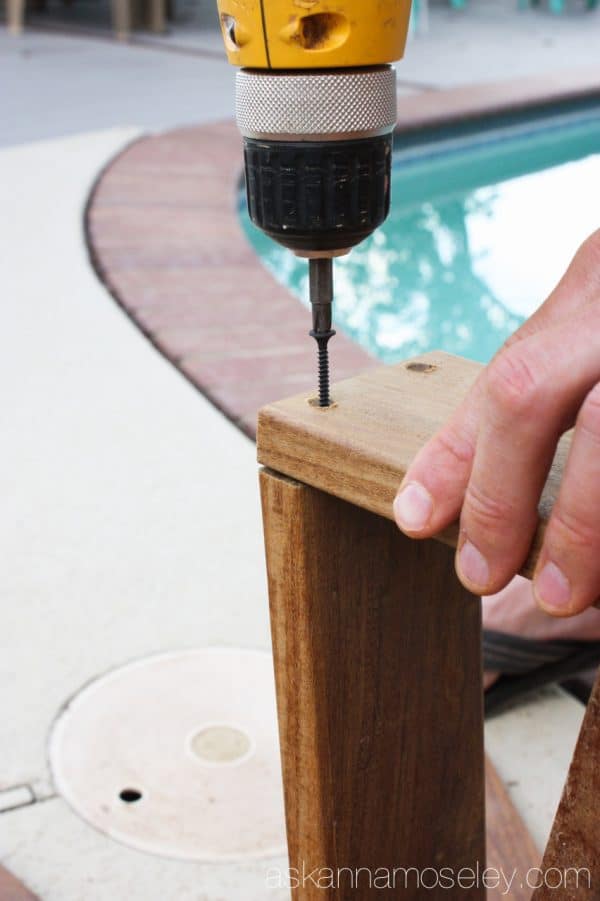
Here’s what it will look like when you’re done.
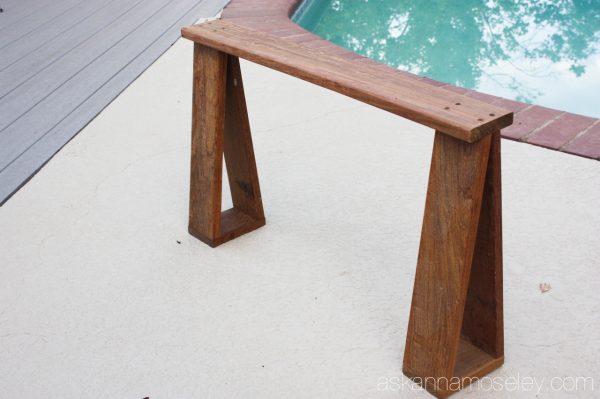
Step 8:
Now that you have your sawhorses built, lay the table top out and place the sawhorses on top of it, to determine where you want to place them.
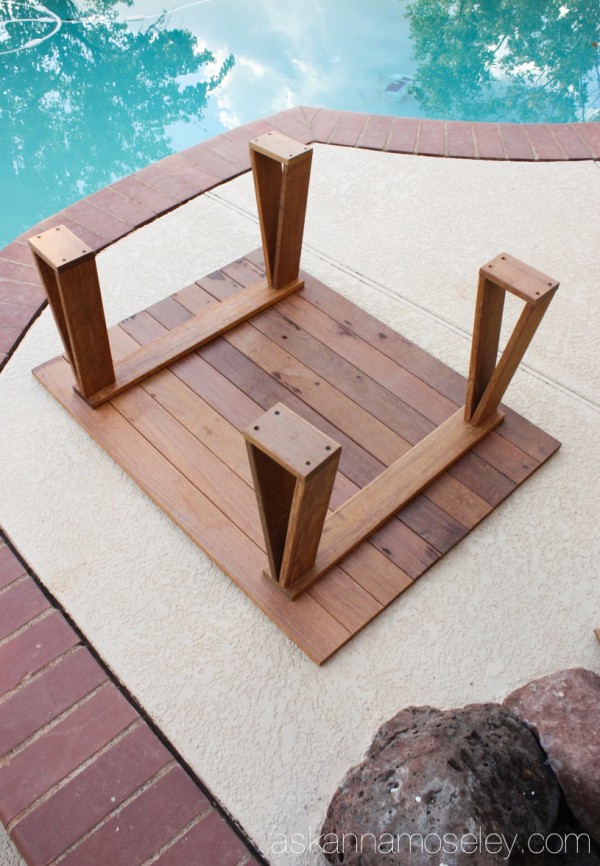
Carefully measure the placement of each sawhorse to make sure they are in the same place on both sides. I placed ours 5 1/4″ in from the ends of the table and split the difference on the width, which ended up being a little less than 2″.
Next screw all the table top boards to the top board of the sawhorse.
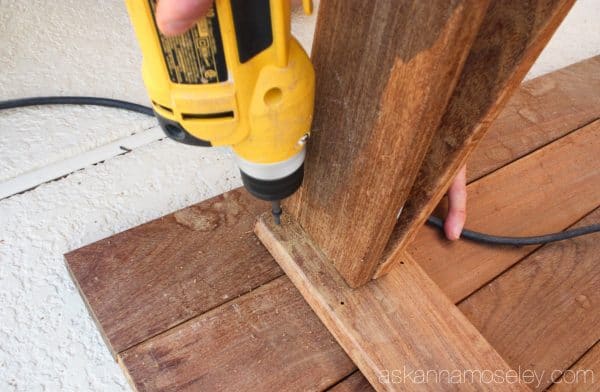
I wanted to make sure the boards didn’t move while my husband was screwing them in, so I stood on the sawhorse while he pre-drilled the holes and putting the screws in.
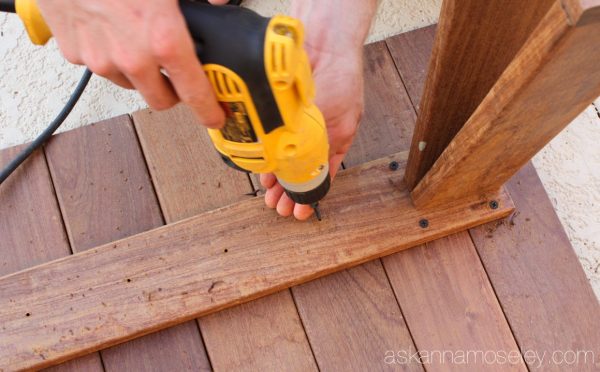
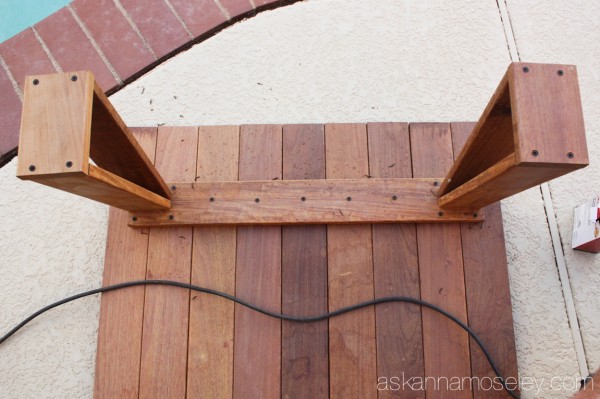
Step 9:
Don’t worry, we are ALMOST done! Flip the coffee table over and give it a good wipe down with a damp cloth. It’s probably covered in saw dust, or like ours, sticky because it decided to downpour in the middle of us building the table.
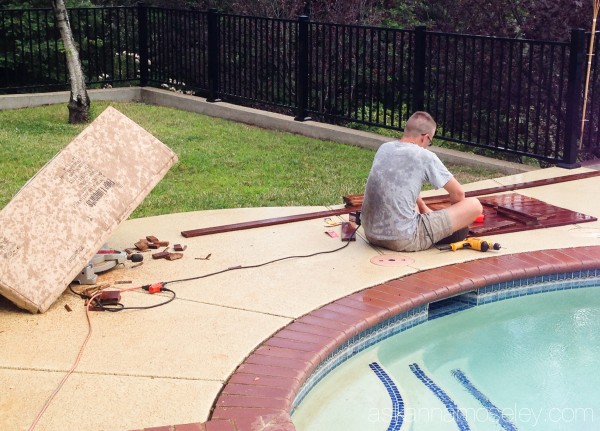
Once the table is dry, you can stain it, if you’d like, or seal it, or both! Since our table is going to be outside, I applied the same sealer they used on our outdoor kitchen cabinets.
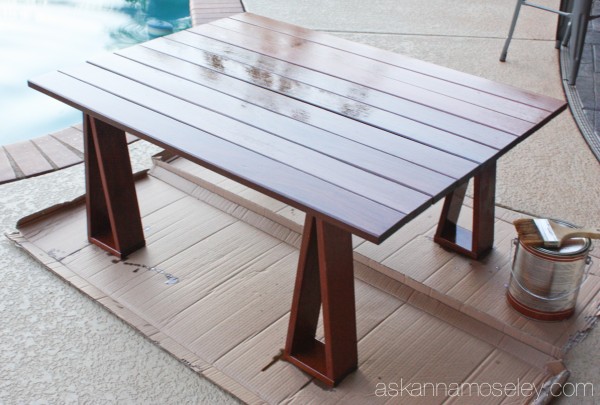
It’s amazing to me how moisturizing the sealer is to this particular type of wood. It goes from dried out and orange colored, to a rich, beautiful red color.

It was totally not on purpose but I love how the colors of the tabletop start out lighter and then gradually get darker, it ended up a pretty cool accident. 🙂
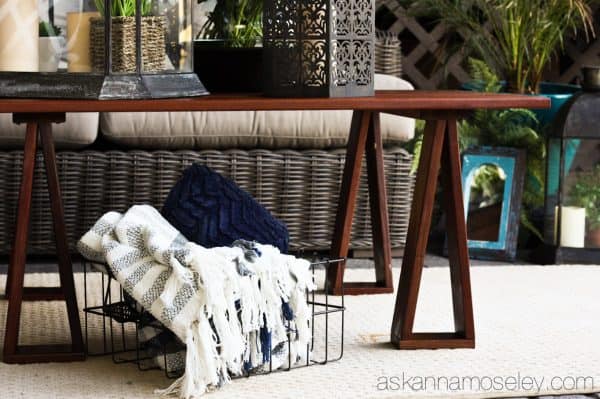
I love the way it turned out! It’s a rustic style, keeping with the outdoor theme, and the color coordinates perfectly with our kitchen. It was also fairly easy to make and now we have a custom coffee table that’s one of a kind!
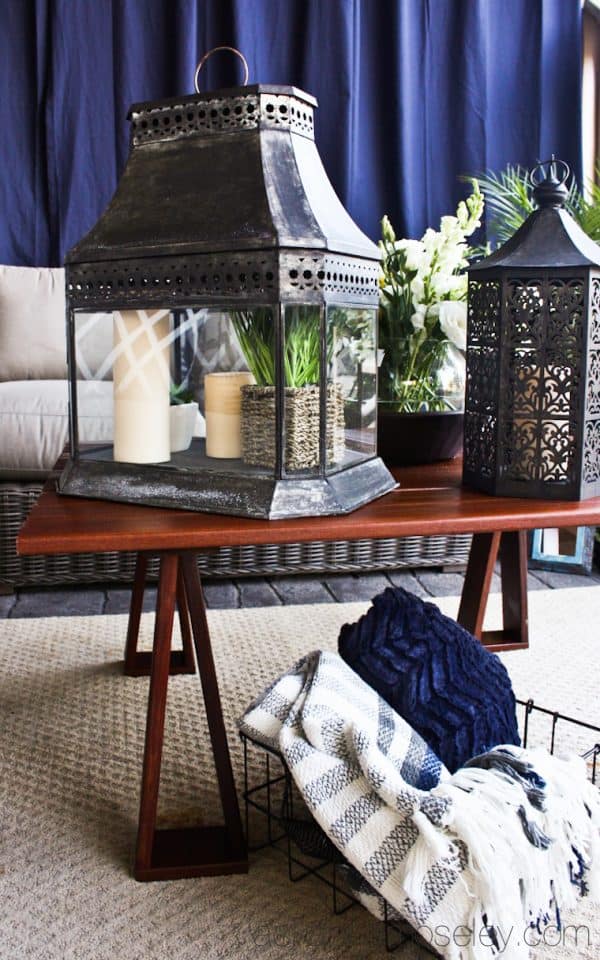
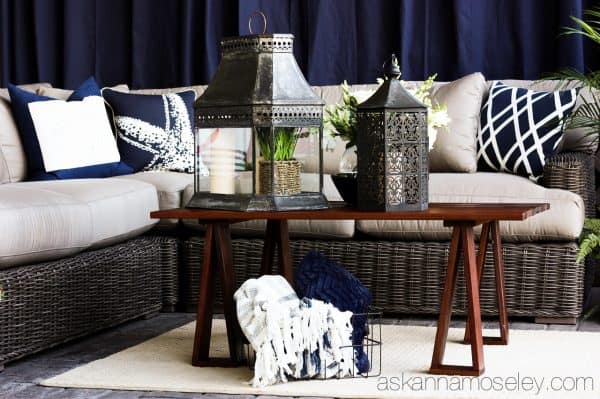
If you use this tutorial to make your own DIY sawhorse coffee table please email me a picture, I’d love to see how it turned out! 🙂
Shop the look –
- Sofa – Arhaus
- Calypso cut-out lantern
- Calypso 17″ lantern
- Wire basket and blankets – T.J. Maxx
- Decorative pillows – Target
- Rug – Walmart